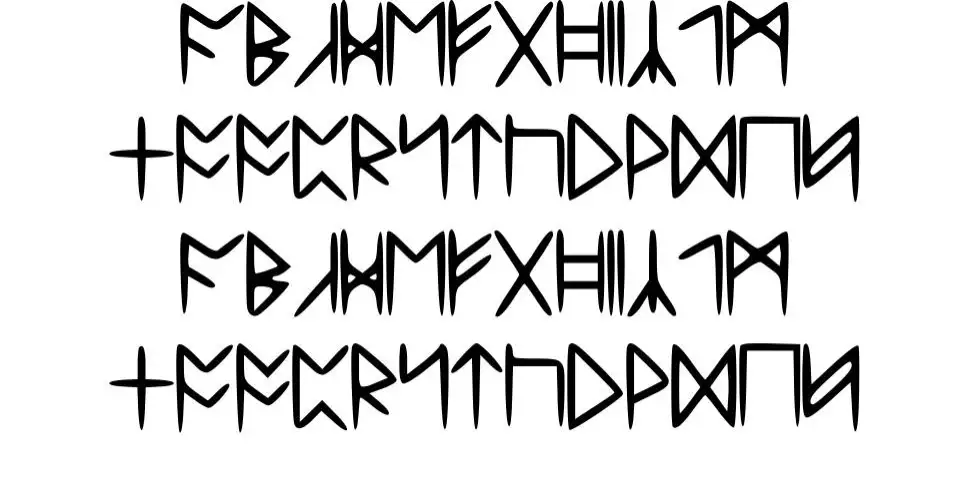The RUNE Standard for Bitcoin NFTs: A Comprehensive Guide
The RUNE standard is a set of rules and protocols designed to facilitate the creation, transfer, and management of NFTs on the Bitcoin blockchain.Bitcoin, the pioneering cryptocurrency, has been a trailblazer in the blockchain world. Its decentralized nature and secure infrastructure laid the foundation for the blockchain revolution. Over the years, Bitcoin's use case has expanded beyond a peer-to-peer currency to a platform for decentralized finance (DeFi) and, more recently, non-fungible tokens (NFTs). Among the latest developments in the Bitcoin ecosystem is the emergence of the RUNE standard for Bitcoin NFTs, which seeks to unlock new possibilities for digital assets on the Bitcoin blockchain.
Understanding Bitcoin NFTs
NFTs, or non-fungible tokens, are unique digital assets that represent ownership of a specific item or piece of content, such as art, music, collectibles, or virtual real estate. Unlike cryptocurrencies like Bitcoin or Ethereum, which are fungible (interchangeable), NFTs are unique and cannot be replaced or exchanged on a one-to-one basis.
Historically, Ethereum has been the dominant platform for NFTs, thanks to its smart contract capabilities and standards like ERC-721 and ERC-1155. However, Bitcoin, despite its immense network security and value, lacked a robust framework for NFTs until the introduction of protocols like Ordinals and now the RUNE standard.
What is the RUNE Standard?
The RUNE standard is a set of rules and protocols designed to facilitate the creation, transfer, and management of NFTs on the Bitcoin blockchain. It leverages Bitcoin’s native attributes, including its unparalleled security and decentralization, to provide a robust infrastructure for NFTs. By introducing a standardized approach, the RUNE standard aims to address the technical and usability challenges associated with implementing NFTs on Bitcoin.

Key Features of the RUNE Standard
-
Interoperability The RUNE standard is designed to ensure compatibility with existing Bitcoin infrastructure and other blockchain ecosystems. This feature makes it easier for developers and users to integrate Bitcoin NFTs into their platforms and wallets.
-
Scalability One of the challenges of implementing NFTs on Bitcoin is the network’s scalability. The RUNE standard incorporates innovations like layer-2 solutions to reduce transaction fees and improve throughput, enabling a seamless experience for users.
-
Security Bitcoin’s network is known for its security, and the RUNE standard leverages this to provide a tamper-proof and decentralized framework for NFTs. This ensures that digital assets remain secure and immutable.
-
Energy Efficiency By utilizing advanced encoding methods and efficient transaction structures, the RUNE standard minimizes the environmental impact of creating and managing NFTs on Bitcoin.
-
Enhanced Metadata The RUNE standard supports rich metadata, enabling creators to include detailed information about their NFTs, such as provenance, ownership history, and embedded media. This improves the discoverability and usability of Bitcoin NFTs.
How the RUNE Standard Works
The RUNE standard builds on Bitcoin’s existing capabilities, using techniques like Ordinals, Taproot, and SegWit to enable NFT functionality. Here’s a breakdown of its core components:
1. Inscriptions
Inscriptions are at the heart of the RUNE standard. Similar to Ordinals, they involve embedding metadata into Bitcoin transactions. These inscriptions can include textual, visual, or even audio data, creating a unique digital artifact on the blockchain.
2. Provenance and Ownership
The RUNE standard ensures that the ownership of an NFT is tied to a specific Bitcoin address. Transfers of NFTs are conducted through Bitcoin transactions, preserving the decentralized nature of the blockchain.
3. Layer-2 Solutions
To address Bitcoin’s scalability limitations, the RUNE standard integrates layer-2 solutions like the Lightning Network. These solutions enable fast and low-cost transactions for NFTs without compromising the security of the main Bitcoin network.
4. Smart Contract Integration
Although Bitcoin does not natively support complex smart contracts like Ethereum, the RUNE standard employs techniques to enable programmable functionality. For instance, it uses Bitcoin Script and additional protocols to facilitate conditional transfers and royalty payments.
5. Cross-Chain Bridges
The RUNE standard includes mechanisms for interoperability with other blockchain networks. This allows users to move their Bitcoin NFTs to platforms like Ethereum or Polygon, broadening the utility and market reach of these assets.
Advantages of the RUNE Standard
1. Leveraging Bitcoin’s Security
Bitcoin is the most secure blockchain, with a decentralized network of miners ensuring its integrity. By building NFTs on Bitcoin, the RUNE standard benefits from this security, providing creators and collectors with unparalleled confidence in the authenticity and permanence of their assets.
2. Wider Adoption Potential
Bitcoin has the largest user base and the highest market capitalization among cryptocurrencies. Introducing NFTs on Bitcoin through the RUNE standard could attract a broader audience, including Bitcoin enthusiasts who have been hesitant to engage with NFTs on other blockchains.
3. Sustainability
The RUNE standard’s focus on efficient transaction encoding and layer-2 solutions makes it a more environmentally friendly option for NFTs compared to other platforms.
4. Decentralization
Unlike many other NFT platforms that rely on centralized servers for metadata storage, the RUNE standard ensures that all data is stored directly on the Bitcoin blockchain or its layer-2 solutions, preserving decentralization.
Use Cases for Bitcoin NFTs with the RUNE Standard
-
Digital Art Artists can create and sell unique digital artworks on Bitcoin, leveraging its security and global reach.
-
Gaming and Virtual Worlds In-game items and virtual real estate can be tokenized as Bitcoin NFTs, enabling players to trade and own assets in a decentralized manner.
-
Collectibles Rare collectibles, such as trading cards or memorabilia, can be represented as NFTs on Bitcoin, attracting collectors and enthusiasts.
-
Identity and Certification The RUNE standard can be used to issue tamper-proof certificates, such as diplomas, licenses, or identity documents.
-
Tokenized Real-World Assets Real estate, luxury goods, and other tangible assets can be tokenized as Bitcoin NFTs, enabling fractional ownership and efficient trading.

Challenges and Solutions
1. Scalability
Bitcoin’s limited transaction throughput poses a challenge for mass adoption of NFTs. The RUNE standard addresses this through layer-2 solutions and efficient encoding methods.
2. User Experience
Interacting with Bitcoin NFTs can be complex for non-technical users. To improve accessibility, the RUNE standard emphasizes intuitive wallet designs and user-friendly interfaces.
3. Market Competition
Ethereum and other blockchains dominate the NFT space. The RUNE standard differentiates itself by focusing on Bitcoin’s security, decentralization, and wide user base.
Future of the RUNE Standard
The RUNE standard represents a significant step forward for Bitcoin NFTs. As adoption grows, we can expect further innovations, such as:
-
Integration with DeFi Protocols: Enabling NFTs to be used as collateral or yield-generating assets.
-
Expanded Metadata Standards: Supporting more complex and interactive NFT experiences.
-
Enhanced Cross-Chain Functionality: Improving interoperability with other blockchain ecosystems.
Conclusion
The RUNE standard is poised to revolutionize the Bitcoin blockchain by enabling a robust framework for NFTs. By combining Bitcoin’s unmatched security with innovative solutions for scalability, interoperability, and usability, the RUNE standard unlocks new possibilities for creators, collectors, and developers. As the NFT space continues to evolve, the RUNE standard ensures that Bitcoin remains at the forefront of the digital asset revolution.
